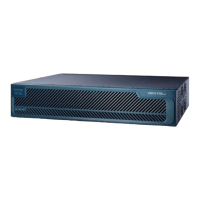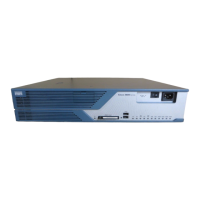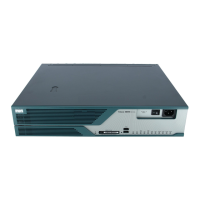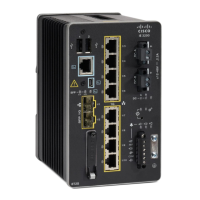B-4
Cisco 3700 Series Routers Hardware Installation Guide
OL-2180-08
Appendix B Using the ROM Monitor
ROM Monitor Command Descriptions
environment variable to point to another image. The first image in CompactFlash memory is invoked if
the ROM monitor does not recognize a device ID specified in the boot command. The router cannot boot
if there is no Cisco IOS software image in CompactFlash memory.
To boot a router from a Cisco IOS software image on a TFTP server (netboot), the installed DRAM must
be adequate to hold two uncompressed Cisco IOS software images: the image from CompactFlash
memory and the image downloaded from the TFTP server.
If the router is configured to boot from a TFTP server (boot bits in the configuration register are set from
2 to 15), the router first boots from the image in CompactFlash memory. It decompresses that image in
DRAM, parses the boot system commands, downloads the Cisco IOS software image from the TFTP
server, and decompresses it in DRAM. After the Cisco IOS software image from the TFTP server is in
DRAM, the DRAM memory occupied by the boot helper image is released.
Note Booting from a TFTP server is useful if the router does not have enough CompactFlash memory to hold
large images. With a small image in CompactFlash memory (just large enough to support the necessary
interfaces), the router boots from CompactFlash, and then the larger image is downloaded from the TFTP
server.
The boot command syntax is as follows, where:
• partition is a partition number in CompactFlash memory
• filename is the Cisco IOS software image file name
• tftpserver is the IP address of the TFTP server
• -x directs the router to load the image but not execute the boot process
• -v (Verbose) specifies that progress print setting messages and error information be displayed
boot [flash: [partition: [filename]] | slot0: [partition: [filename]] | slot1: [partition: [filename]] |
filename tftpserver] [-x] [-v]
Some examples of boot commands are as follows:
Note In all boot commands, boot can be entered as b.
• boot—Boots from the first Cisco IOS software image in internal CompactFlash memory.
• boot flash:—Boots from the first Cisco IOS software image in internal CompactFlash memory.
• boot flash: partition:—Boots from the first Cisco IOS software image in the specified partition in
internal CompactFlash memory.
• boot flash: filename—Boots from the specified IOS software image in internal CompactFlash
memory.
• boot flash: partition: filename—Boots from the specified Cisco IOS software image in the specified
partition in internal CompactFlash memory.
• boot slot0:—Boots from the first Cisco IOS software image in the first partition in the
CompactFlash memory card in slot 0.
• boot slot0:2:—Boots from the first Cisco IOS software image in the second partition in the
CompactFlash memory card in slot 0.
• boot slot0: filename— Boots from the specified Cisco IOS software image in the CompactFlash
memory card in slot 0.

